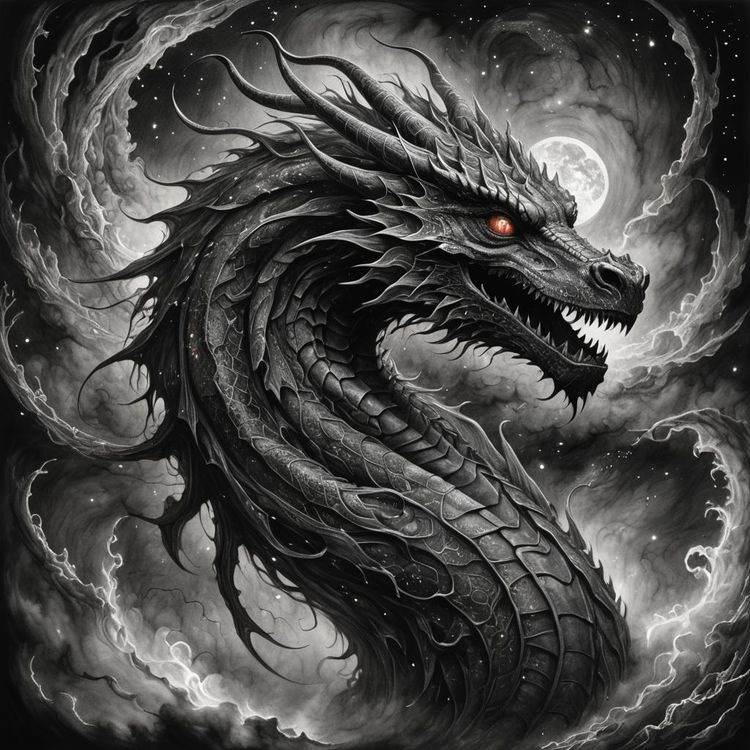The great cosmic dragons, ancient and ethereal, are said to roam the vast expanse of the astral planes, their presence felt across the fabric of existence. In Eastern philosophy, particularly in traditions like Hinduism and Buddhism, the cycle of samsara—the continuous loop of death and rebirth—echoes the essence of their cosmic role. These dragons do not simply devour; they are harbingers of transformation, transcending the physical realms to guide souls through the spiritual evolution necessary for their next incarnation.
The dragons themselves are said to be guardians of karma, the accumulated actions and consequences that shape each soul’s journey. In the astral realm, they move silently, stalking the lost and wandering souls that cling to their attachments or fears, preventing them from transcending to their next life. To the unenlightened, their arrival is fearsome: they appear as vast serpents of shifting stardust, their scales reflecting galaxies and universes, their eyes glowing with the wisdom of countless ages.
When a soul’s time has come, and its karmic cycle demands transition, the dragon approaches, its form merging with the very essence of the astral plane. The devouring is not an act of destruction, but a sacred process where the soul is stripped of its previous identity, allowing it to shed the illusions that bound it in its former existence. This is the dissolution of the ego, a necessary part of rebirth in Eastern traditions. The dragon’s mouth becomes the gateway, and as the soul passes through, it is purified and prepared for its new journey.
The soul’s bardo state, as understood in Tibetan Buddhism, is the intermediary stage between death and rebirth. It is here, in this liminal space, that the dragons do their work. They dissolve the attachments that tether a soul to its past life, releasing the karmic debts and allowing it to transcend to a new form. Depending on the soul’s karmic balance, the cosmic dragon may transport the soul to a higher plane of existence, or it may return to Earth in a new body to continue its spiritual growth.
Eastern philosophy emphasizes that each rebirth is an opportunity for the soul to learn, grow, and move closer to moksha (liberation) or nirvana (the end of suffering). The dragons, though fearsome, are facilitators of this process, ensuring that no soul remains stagnant or trapped in the cycle unnecessarily. They enforce the balance of karma, ensuring that each being moves according to the divine order of the universe.
The dragons themselves are ancient beings, manifestations of Dharma, the cosmic law that governs all existence. Their purpose is not rooted in good or evil, but in maintaining the natural order. To the spiritually aware, the dragon’s appearance is not to be feared but revered—a sign that transformation is imminent, and that the soul is ready for its next step in the journey toward enlightenment.
In essence, the great cosmic dragons serve as both guides and guardians of the astral realm, devouring the old so that the new may emerge. They are a force of cosmic equilibrium, embodying the cyclical nature of death and rebirth, and reminding us that even in the vastness of the universe, every soul is part of an interconnected journey toward transcendence.
